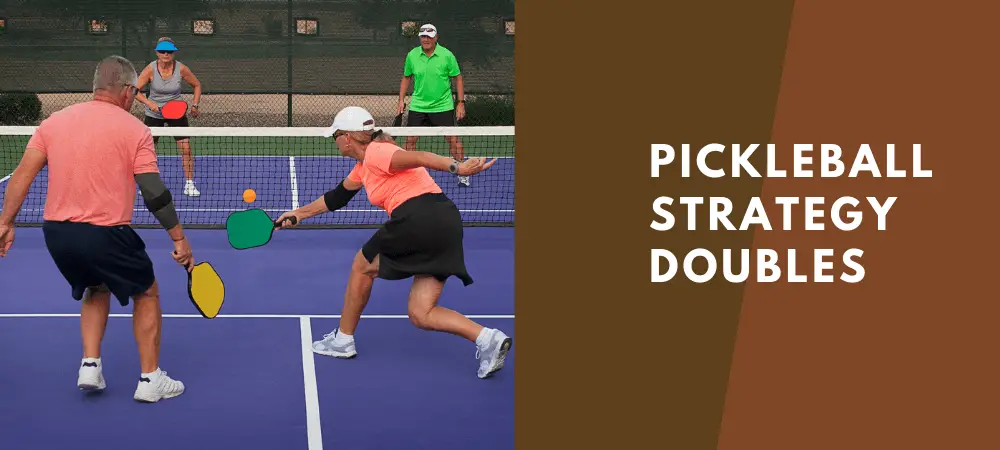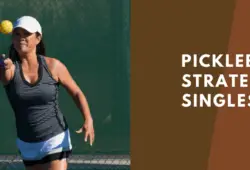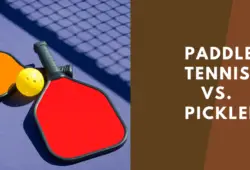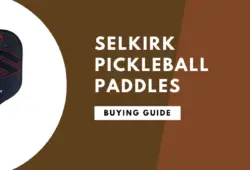Like in any game, when you’re playing pickleball, you’re competing to win.
So you and your partner have to act smart to stay on top of the game.
But how? By applying productive strategies.
In this article, we compile for you some of the top pickleball strategies for doubles that have worked for others.
1. Serving Strategies
When it comes to serving, you should work on letting loose.
That means you just let the ball into the court and play.
Don’t focus too much on those complex shots you have been watching online, well, not unless you’re already too sure about your skills.
But even then, we advise you to stick with simple shots, at least in the beginning as you master your opponent.
Focus on getting your opponent moving as this will help you identify their weak spot and maximize it to your advantage.
Also, remember to always get your serve in and as deeply as you can.
The idea should be to get the ball past the middle to minimize the chances of hitting wide.
Plus it will set your opponents into confusion mode and they might not even be able to decide who among them returns the shot.
Another great tactic is to hit towards your opponent’s backhand and see how they return the ball. Most beginner players aren’t good with this and you can utilize it.
But if you’re playing with a top player, you might want to refrain from that as some of them are pretty good with the backhand.
2. Passing Shots Strategies
Always work on returning the ball to the center. This is because, it will force your opponents to keep moving and amid the confusion, they will also have to keep guessing who’s going to hit the ball next.
Maximize on letting the ball bounce around the foot of the baseline.
That way, you get to force them back as you maximize the opportunity to follow your return to the net.
Also, when you get the chance to get to the net first, work on hitting a volleyball return. This is a sure way to ensure your opponents get “stuck” at the furthest end of the court.
They will have a hard time reaching the net and as for you, you get the best opportunity to score a point.
3. Third Hit
When playing pickleball, whatever you decide to do with the third hit will highly contribute to the course of the entire game.
This is because, this is the only shot (since the beginning of the game), which you won’t have to concentrate on making it bounce. It can be answered without a bounce.
So you have to plan well on how to handle it. For instance;
- You can decide to lob the ball. That’s getting it over your opponents’ head with the back of the court as your target.
You should, however, restrain from using it on pro players.
- Or you can decide to connect with a soft shot that will land in your opponents’ kitchen/ non-volley zone
- Get more daring and hit the ball at your opponent. It guarantees a powerful shot that might come as a surprise to your opponent.
4. Poaching
This is one of the most popular strategies in pickleball and you might as well try it.
You simply silent signal with your partner and then when least expected, you quickly move over to their side of the court and intercept the coming ball on their behalf.
This works pretty fine especially if you’re more skilled than your opponent and have noticed that your opponents are taking advantage of that fact.
The move empowers you to cut-short your opponents’ intentions and save the day.
But even as you plan to poach, you should consider the following factors to avoid messing up;
- Conduct timely communication with your partner and agree. You should ALWAYS be on the same page.
- Avoid stretching, but rather move. And for this to work perfectly, position your foot well to help you achieve the perfect position for an effective poach.
- Study your opponents and anticipate their next shot. This way, you get to move to your anticipated poaching position right on time and even have a few seconds to settle.
5. Master the Dinking Phase
Sometimes a point keeps going on for long, such that both teams have no choice but to get to the net.
In such a case, it will only be a matter of time before one team commits a foul with the constant movements of the ball (back and forth). And this is the duration that’s referred to as the dinking phase.
You, therefore, have to plan for this phase to win. And one of the best strategies to apply is to let your opponent get too comfortable and return the ball too high.
And when they do so, you and your partner should be ready to perform a smash.
Yes, you heard it right. Smash powerfully and let your opponent lose the point earning yourself an automatic ticket to victory! Hurray!
6. Stacking
Sometimes the line between your lose and win depends on the court positions you and your partner are taking.
That’s why it’s common to see players stacking at an attempt to outdo their opponents.
This simply means that you and your partner get to re-arrange your positions.
This is one of the best ways to mask your weaknesses and smartly work on winning.
You might need a stacking if;
- You want to maintain the forehands at the center of the court. This means you get to stack right-left.
- You want to ease the movements in times of poaching
- You want to give a cover to the weaker backhand player in the team.
- You want to allow the strong backhand or forehand player in your team to take the shots.
Whichever the case, remember you’re working as a team and therefore everything you pre-arrange should be for the best interest of the team.
7. Unison Movements
When your partner hits the ball, stay calm and let them determine where you will be moving to next and at what time.
For instance, if they are hitting the ball at the baseline, and make an angled movement towards the direction of they hit the ball, you should also be ready to move forward, but only after they do.
Remember if you move randomly and create an unnecessary gap, your opponents might use it to their advantage to place the winning shot.
You should always move in unison to cover each other and ensure no gap is left in the middle.
Bonus: Here’s a video of real pickleball strategy in action for doubles, so that you understand what we mean;
Pickleball Strategy Doubles Tips
- Focus more on getting the ball over the net. So practice as much as you can in your free time.
- Work on avoiding return serve faults and keep the opponents back by aiming at the middle.
- Don’t let a gap form between you and your partner. Always move in unison to avoid giving your opponents an easy target.
- Focus on getting your team to the net. It gives you an upper hand on the point.
- Stay in constant with your partner throughout the game.
Conclusion
Playing and winning pickleball means you have to act smart and not harder.
And for that, you require smart strategies.
The above strategies aren’t conclusive, they are just examples of what has worked for various pickleball players.
So feel free to share some of the strategies that have worked for you in the comment section below.




